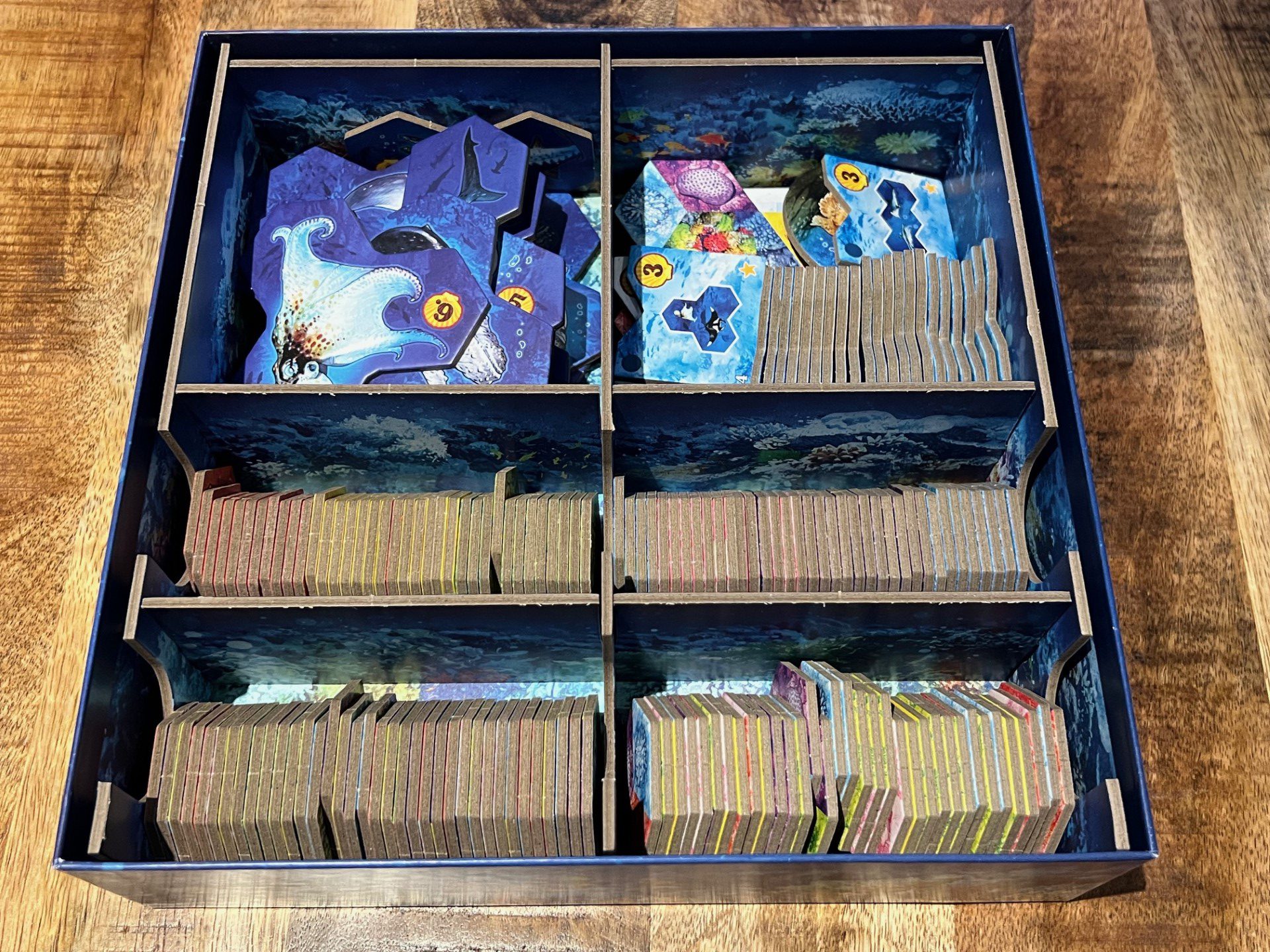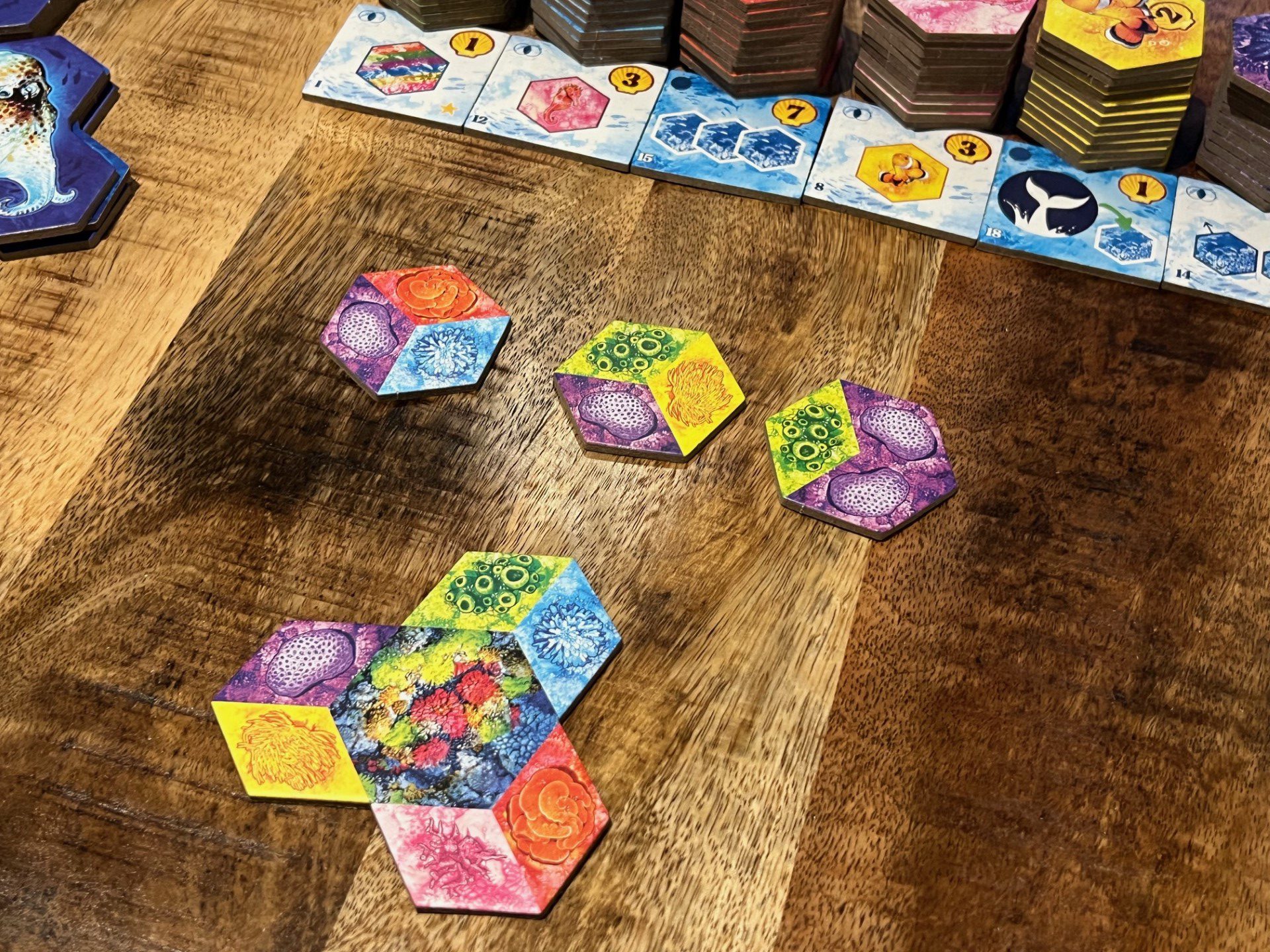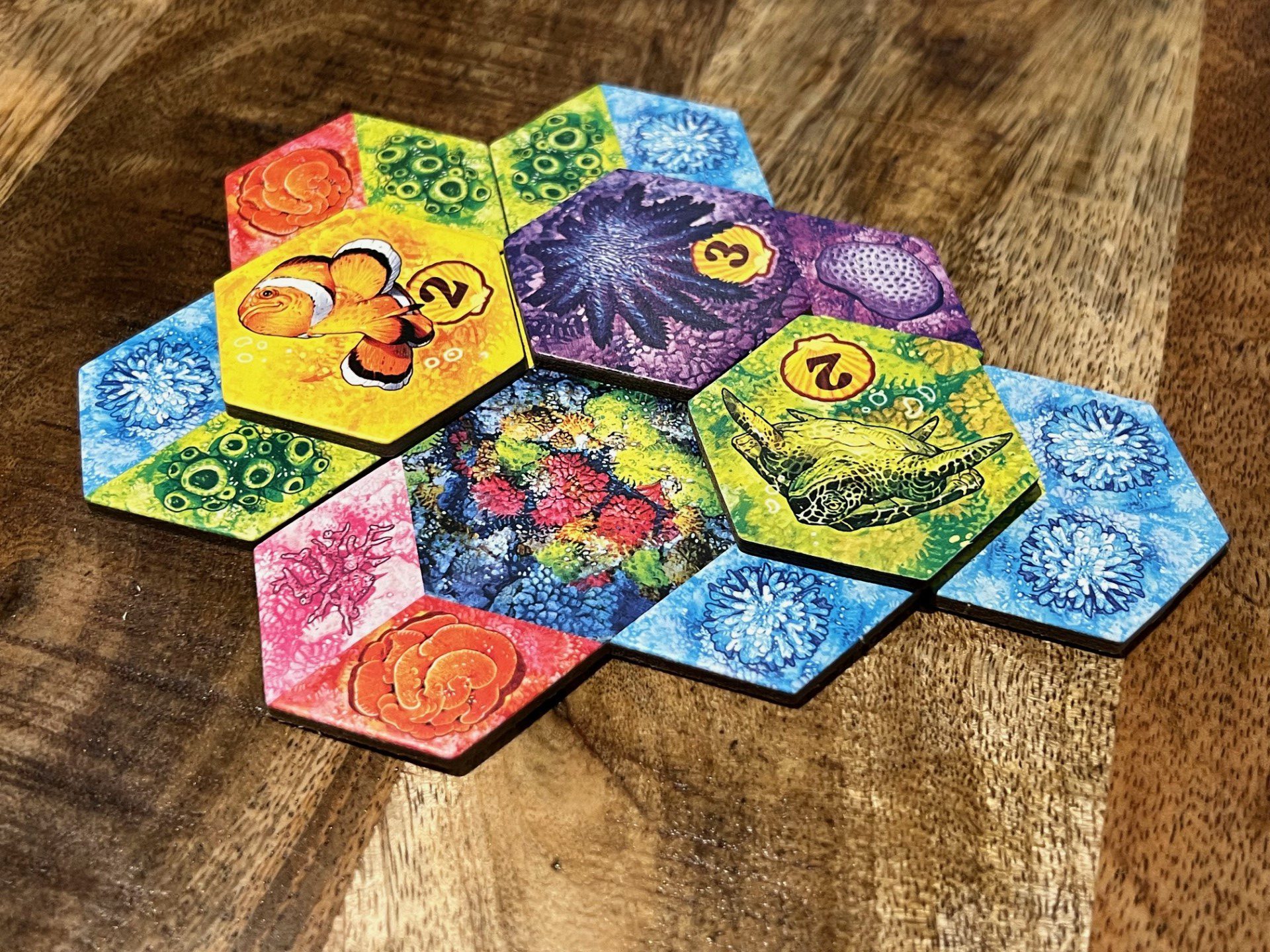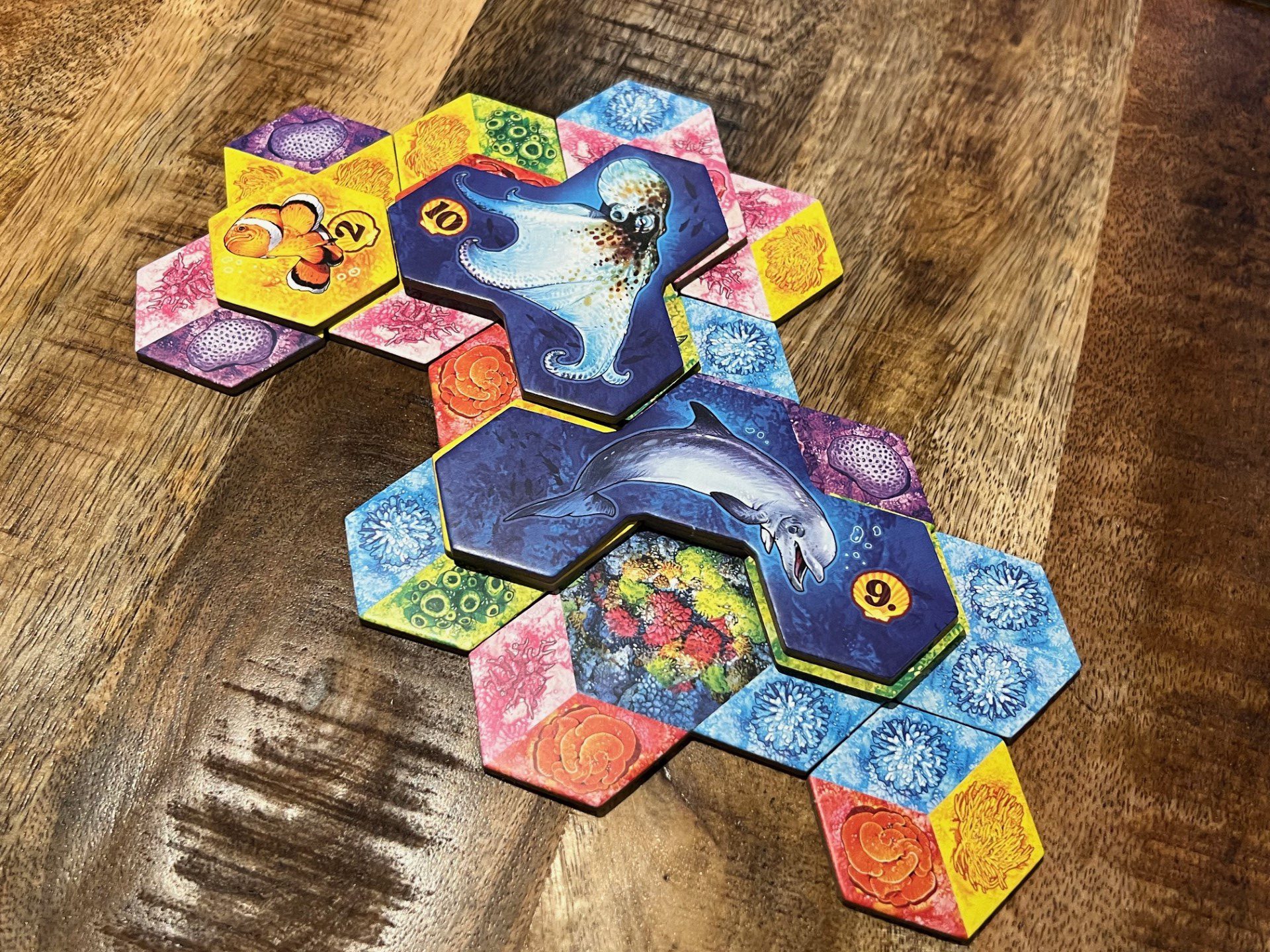Aqua: Biodiversity in the Oceans is a point scoring paradise
If there is one thing I love about tile-placement games, it’s how a simple premise can lead to some very interesting gameplay. Even better when such a game can be accessible to some audiences, but deeply strategic and challenging for others. Aqua: Biodiversity in the Oceans is all these things thanks to simple core mechanics and several variant layers that introduce increasingly difficult scoring opportunities. You can play this game with a five-year-old, or with your most competitive gaming buddies.
The premise for Aqua: Biodiversity in the Oceans is reasonably simple. Players must add hexagonal tiles to their starting tile in order to create matches that ultimately lead to either hexagons formed between three tiles (habitats) or non-hexagon runs of identical spaces (reefs). When a hexagon is formed, a small animal tile matching the same colour must be placed on top of it, and at the end of the game this small animal will score points as shown on it.

If a player can get two or more small animals into habitats adjacent to each other, then the player may choose (immediately upon placing a small animal) to put a large animal of the shape that matches the pattern of small animal habitats beneath it. Large animals are worth more the sooner you place them, so there’s always a temptation to cover even the smallest pair of animals as soon as you can, but large animals of three or even four spaces in size are worth a lot more points.
In its simplest variation, that’s all you need to worry about in Aqua: Biodiversity in the Oceans – small animals and the large ones that, thematically, eat them. This is how I play with my seven-year-old daughter and she absolutely loves it. But, for games with older or more experienced players, there is also reef scoring and the addition of ecosystem scoring tiles.

Reef scoring adds a bit of a consolation for when you are able to join tile sections of the same colour, but can’t (or don’t want) to form a full hexagon to make a habitat. Instead, reefs are formed when you have four identical spaces in a row, and these allow all small animal tiles adjacent to them to be scored a second time. This is actually pretty simple, and whilst the rules don’t say so, I have included them in games with my kids without also adding the ecosystem tiles (which genuinely are complex).
If you choose to add in the ecosystem scoring tiles, you’ll choose six from a selection of twenty-four during setup, and the game suggests six specific ones for your first few games. I like to mix the whole lot together and see what comes out — with each one adding potential ways to score, including a few that actually change the game.

Every ecosystem tile is linked to one of the six colours of small animals (with the pairing being set randomly). Every animal is considered the “native animal” for that ecosystem, and the scoring will typically be linked to that native animal. Ecosystem tiles score for certain other animals adjacent to the native animal, or for large animals on top of the native animal, and for loads of other things. The reason this is complex is because you’re already thinking about small and large animal place, plus reefs, and now adding in six varied additional ways to score is… A lot.
But goodness me, it’s a lot to like as well. So many tile placement games I’ve played before seem to reach a ceiling of complexity that ultimately means their appeal will fizzle out as anything besides a light to mid-weight filler. Aqua: Biodiversity in the Oceans might end up like that at some point, but after about 20 games in just a few days since I received it, I have no sense that such an issue is on the horizon.

And I mean, just look at it. Aqua: Biodiversity in the Oceans has to be one of the brightest, boldest designs of 2024 to date — with gorgeous colours, thickly drawn animals that stand out, and large animals that look both majestic and somehow a bit weird — almost reflecting their predatory nature.
With multiplayer modes to suit players of all ages and levels of experience, Aqua: Biodiversity in the Oceans already offers a lot, but it also has a solo mode that can be played from start to finish in about ten to fifteen minutes. This mode not only has a kind of score attack table that shows you how well you do, but it also has a whole page of scenarios, where specific ecosystem tiles are used and specific challenges are issued. The attention to detail is incredible, and the breadth and versatility of Aqua: Biodiversity in the Oceans is to be applauded.

And so, it remains to be seen whether Aqua: Biodiversity in the Oceans has true, lasting appeal, but after as many games as I’ve played of anything else in the last year or two, it certainly doesn’t feel like the shine is going to wear off. Rather, I am just starting to learn which ecosystem tiles can benefit others, and when one has to be ignored to focus scoring opportunities on two or three others — it’s a whole different game that has started to emerge.
If you like tile placement, marine-biology, or games that have a really puzzly scoring mechanism, then Aqua: Biodiversity in the Oceans is definitely worth a look. For this price point, with this artwork, and with so many ways to cater to every audience Aqua: Biodiversity in the Oceans is just about best in class.
You can purchase Aqua: Biodiversity in the Oceans on Amazon.
Comments are closed.